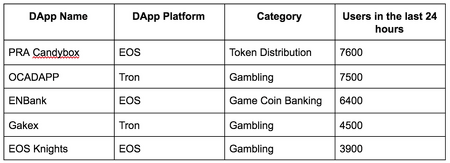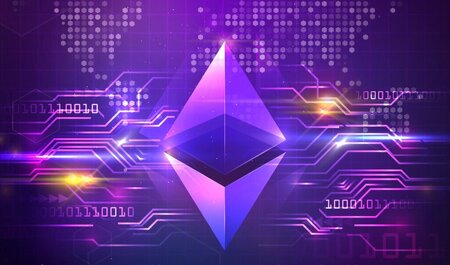
Blockchain Government Use cases – [Algorand, ICON, Power Ledger, and RSK]
It confirms that each unit of value was transferred only once, solving the long-standing problem of double spending. A blockchain can maintain title rights because, when properly set up to detail the exchange agreement, it provides a record that compels offer and acceptance. Blockchain was invented by a person (or group of people) using the name Satoshi Nakamoto in 2008 to serve as the public transaction ledger of the cryptocurrency bitcoin.
Transparency and resistance to manipulations are key to building confidence and trust among the participants. While Bitcoin paved the way for cryptocurrencies and the blockchain technology, Ethereum was the one that first showed everyone the true potential of blockchain technology. Ethereum allowed developers from all over the world to run their Dapps on top of their platform. Ethereum developers can code smart contracts on Ethereum, which serves as the blueprint for the Dapp. Before we can even fathom what Dapps do, we need to be familiar with its underlying technology—the blockchain.
The invention of the blockchain for bitcoin made it the first digital currency to solve the double-spending problem without the need of a trusted authority or central server. The bitcoin design has inspired other applications, and blockchains that are readable by the public are widely used by cryptocurrencies. Sources such as Computerworld called the marketing of such blockchains without a proper security model “snake oil”. The analysis of public blockchains has become increasingly important with the popularity of bitcoin, Ethereum, litecoin and other cryptocurrencies. A blockchain, if it is public, provides anyone who wants access to observe and analyse the chain data, given one has the know-how.
Train to Become A Blockchain Developer
The process of understanding and accessing the flow of crypto has been an issue for many cryptocurrencies, crypto-exchanges and banks. The reason for this is accusations of blockchain enabled cryptocurrencies enabling illicit dark market trade of drugs, weapons, money laundering etc. A common belief has been that cryptocurrency is private and untraceable, thus leading many actors to use it for illegal purposes. The development, some argue, has led criminals to prioritise use of new cryptos such as Monero. The question is about public accessibility of blockchain data and the personal privacy of the very same data.
The Birth of Decentralized Applications
We have already seen the benefits in the form of success of bitcoin and other cryptocurrencies. Most cryptocurrencies use blockchain technology to record transactions. For example, the bitcoin network and Ethereum network are both based on blockchain.
By design, a blockchain is resistant to modification of the data. It is “an open, distributed ledger that can record transactions between two parties efficiently and in a verifiable and permanent way”. For use as a distributed ledger, a blockchain is typically managed by a peer-to-peer network collectively adhering to a protocol for inter-node communication and validating new blocks. Once recorded, the data in any given block cannot be altered retroactively without alteration of all subsequent blocks, which requires consensus of the network majority.
No government authorities can block or shut a dapp down, as it doesn’t lie on any central server. Transactions on blockchains are public and so easily verifiable.
To Kickstart a Dapp Project:
The block validation system results in new transactions being added irreversibly and old transactions preserved forever for all to see, hence its transparency and resilience. Open-source software that leverage on the blockchain technology are called Dapps.
- A blockchain database is managed autonomously using a peer-to-peer network and a distributed timestamping server.
- This allows the participants to verify and audit transactions independently and relatively inexpensively.
It is a key debate in cryptocurrency and ultimately in blockchain. The first blockchain was conceptualized by a person (or group of people) known as Satoshi Nakamoto in 2008. The design was implemented the following year by Nakamoto as a core component of the cryptocurrency bitcoin, where it serves as the public ledger for all transactions on the network.
What are Dapps used for?
DApp tokens are crypto-coins made for the purpose of selling in an ICO to fund the product’s development and also for fueling operations of the DApp. For example, ETH is the “crypto fuel” for running smart contracts on the Ethereum platform.
This allows the participants to verify and audit transactions independently and relatively inexpensively. A blockchain database is managed autonomously using a peer-to-peer network and a distributed timestamping server. They are authenticated by mass collaboration powered by collective self-interests. Such a design facilitates robust workflow where participants’ uncertainty regarding data security is marginal. The use of a blockchain removes the characteristic of infinite reproducibility from a digital asset.
What is Dapps Blockchain?
Decentralized applications (dApps) are digital applications or programs that exist and run on a blockchain or P2P network of computers instead of a single computer, and are outside the purview and control of a single authority.
Launched in 2015, Ethereum is an open-source, blockchain-based, decentralized software platform used for its own cryptocurrency, ether. It enables SmartContracts and Distributed Applications (ĐApps) to be built and run without any downtime, fraud, control, or interference from a third party. Decentralized apps can be used to smoothen money transfer in the world.
DApps may run on top of distributed computing systems such as Ethereum or Bitcoin. Decentralized applications are stored on and executed by a blockchain system. Steem created a well-established ecosystem that leads to the widespread adoption of DApp development. There are large number of DApps that are serving well in various industries. Examples are Steem Monsters, dMania, Steemblr, Musing and SteemHunt etc.
Although blockchain records are not unalterable, blockchains may be considered secure by design and exemplify a distributed computing system with high Byzantine fault tolerance. Decentralized consensus has therefore been claimed with a blockchain.
Put simply, a blockchain is a ledger of records organized in ‘blocks’ that are linked together by cryptographic validation. The key is to understand that this ledger is neither stored in a centralized location nor managed by any single entity, hence its distributed-ness.
DAML – An open-source ecosystem for building smart contract based distributed applications
A decentralized application (DApp, dApp, Dapp, or dapp) is a computer application that runs on a distributed computing system. DApps have been popularized by distributed ledger technologies (DLT) such as the Ethereum Blockchain, where DApps are often referred to as smart contracts. Since there’s no single entity owning and controlling a public network, decentralized applications are fully trusted, transparent and immune to censorship. This means no one can ban you, remove your comments or benefit by selling your data in a Facebookish kind of way.



